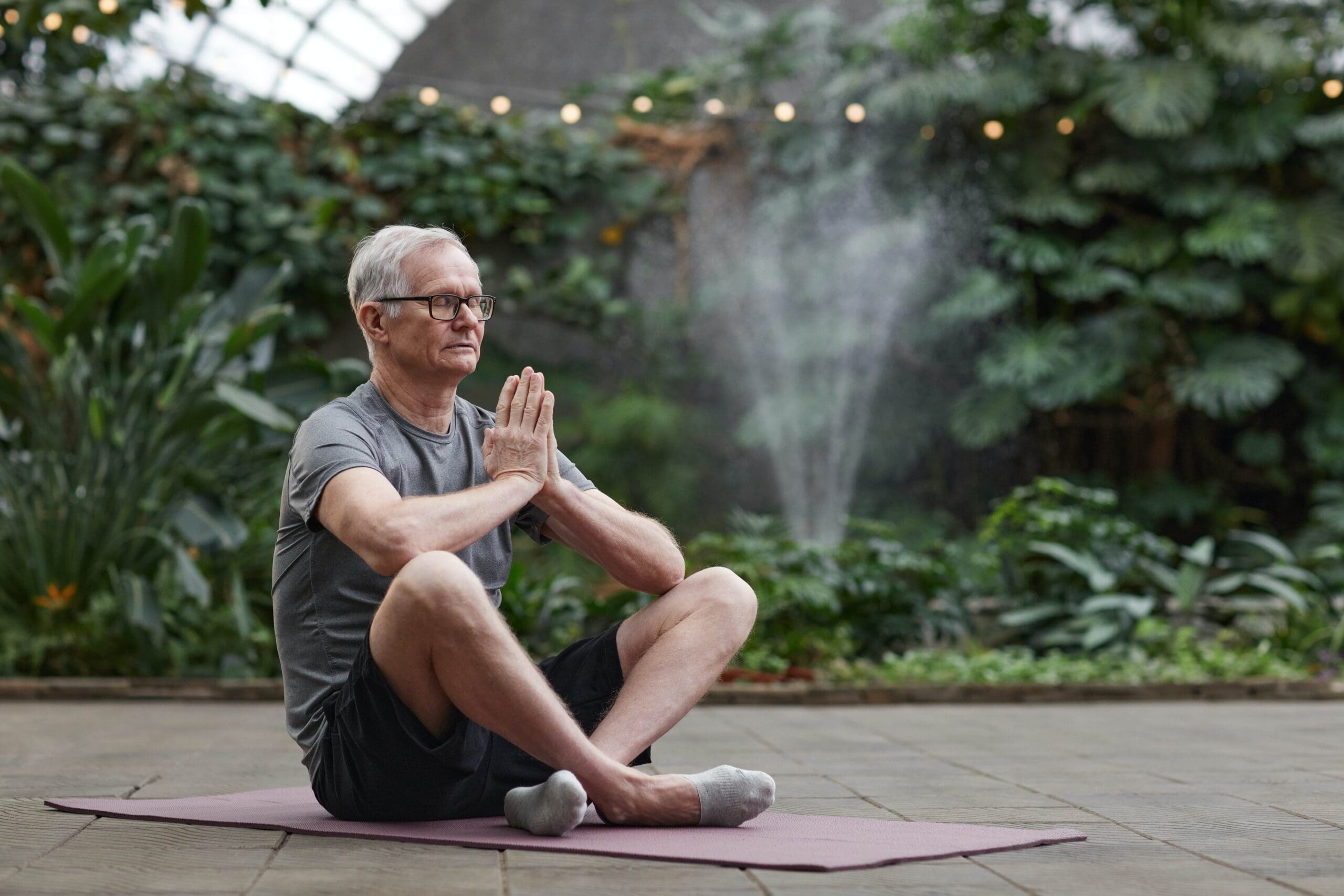Mindfulness is a practice that has been shown to provide significant benefits for people of all genders. Men, in particular, are encouraged to start a mindfulness practice due to the stress and depression-causing effects that masculinity norms can have on them. Here’s your quick guide for how to create a mindfulness practice, just in time for the new year!
The benefits of mindfulness are plentiful, but it’s not always easy to know where and how to begin. This article will give you an overview of mindfulness, why it matters, and how you can get started today!
It’s time to stop feeling overwhelmed by life’s challenges!
Start your own personal journey towards happiness by learning how you can use mindfulness techniques that have been used successfully by women around the world for centuries. Learn about some simple ways to incorporate mindfulness into your daily routine so that you have more peace of mind and less stress in your life. And if you’re looking for more information on why meditation is so beneficial, check out our article here!

KEY POINTS
- Mindfulness is a practice that has been shown to provide significant benefits for people of all genders.
- Men, in particular, are encouraged to start practicing mindfulness due to the stress and depression-causing effects that masculinity norms can have on them.
- Learn about some simple ways to incorporate mindfulness into your daily routine so that you have more peace of mind and less stress in your life.
What is Mindfulness, and What are the Benefits for Men?
While the term “mindfulness” has been getting a lot of buzz lately, it can be tough to wrap your head around. In general, mindfulness is all about shifting your mindset so that you approach life with a deep sense of presence and acceptance.
Mindfulness teaches us to focus on what’s happening right now in our lives. Instead of worrying about the past or stressing out over the future, we appreciate its’ richness. To use a metaphor from Buddhist philosophy, being mindful is akin to being present as if you were standing by a river flowing downstream. You can enjoy each moment as it comes and let it wash away without worrying about what happened or will come next.
Mindfulness has been shown to provide all kinds of positive changes in people’s lives. It’s helped to lower stress levels and improve mental and physical health. It can help make us more resilient to challenging situations, elevating our moods so that we can cope with difficult times better. The list goes on. Clearly, there are many great reasons you should start practicing mindfulness today!
Some studies have also shown that mindfulness can help men become less caught up in their own heads and more connected with their emotions, such as sadness or anger. This means that we’re able to release some of the tension we experience when negative thoughts pop into our minds so that we can shift back into a state of calm and clarity.
How to Start A Mindfulness Practice
Mindfulness practice is a fantastic way to connect with yourself and your surroundings. It can help you focus on the present moment, leading to a more peaceful and stress-free life. While there are many different ways to approach mindfulness practice, there are some basic universal principles. These principles are simply a guide, and you should adjust them to fit your own needs and lifestyle. Here are some basic principles for getting started with mindfulness practice:
Be Present in the Moment
When we can be present in the moment, we can really experience life and all of its beautiful moments. This can be done by simply paying attention to your surroundings, focusing on your breath, or using a mantra to keep you in the present. Here are a few tips on how you can start living more in the present:
– Pay Attention to Your Surroundings: One of the best ways to become more present is simply paying attention to your surroundings. Notice the colors, sounds, and smells that are around you. When you’re able to focus on what’s happening in the present moment, you’re less likely to get caught up in your thoughts and worries about the past or future.
– Focus on Your Breath: How are you breathing right now? If you’re having trouble being in the moment, focus your attention on your breath. Breathe in through your nose and out through your mouth. Notice any sensations that may come when inhaling and exhaling.
– Use a Mantra: When thoughts start rushing into your head in the middle of an intense meditation session, it’s helpful to use a mantra to bring yourself back softly. Some popular mantras include “I am…”, “This is…”, or simply focusing on repeating the word “calm.”
Don’t Judge Yourself or Others
One of the most essential principles of mindfulness is to not judge yourself or others. When we’re able to be non-judgmental, we can accept things for what they are and let go of any negative emotions that may be holding us back. This isn’t always easy, especially when dealing with difficult situations or people. Still, it’s an essential part of practicing mindfulness.
We all make mistakes. We all have our good and bad moments. Understanding that we’re all human is the first step in not judging ourselves or others.
There will always be moments when we need to let go and forgive ourselves and others. Forgive yourself for mistakes in the past and understand that everyone makes them. You don’t have to forget what happened, but try to put all feelings of anger and resentment behind you as much as possible.
Accept What Is
Accepting what is can be difficult, but it’s an integral part of practicing mindfulness. When we can accept things for what they are, we’re less likely to get caught up in our thoughts and emotions. This can be helpful when we’re dealing with difficult situations or people.
It’s important to accept things for what they are. If you’re dealing with a difficult situation or person, remind yourself that it might be uncomfortable but that this is just the way things are at the moment.
Breathe Consciously
One of the most essential aspects of mindfulness is to focus on your breath. When you’re able to focus on your breath, you’re able to focus on the present moment and clear your mind of any distractions.
Here are a few tips on how you can breathe consciously:
– Inhale through Your Nose: When you inhale, try to do so through your nose. This will help you focus on the breath and the sensations that come with it.
– Exhale through Your Mouth: When you exhale, try to do so through your mouth. This will help release any negative energy or thoughts that may hold you back.
– Notice the Sensations: When you’re breathing, try to notice the sensations that come with it. How does the air feel as you’re breathing it in? How do your lungs feel when they’re filled with fresh oxygen? How do they feel when they’ve released all of the stale, used air? How is your stomach moving? How are your shoulders or any other parts of your body moving? How does it all feel?
How to practice mindfulness step by step:
The steps of practicing mindfulness are relatively simple, but they can be challenging to follow at first. Here’s a quick guide on how to get started:
Step 1. Find a quiet place where you won’t be disturbed.
This can be inside or outside, wherever you feel most comfortable. Make sure that any distractions are turned off so that you’re able to entirely focus on what you want to achieve through this session.
Step 2. Sit comfortably in a chair with both feet planted firmly on the ground, or sit cross-legged on the floor with your back straight and head up.
You can also use an exercise ball if that feels more natural for you. Remember not to slouch! How do you know if your posture is good? Imagine there’s a string at the top of your head pulling you upwards. How would you sit in this position?
Step 3. Close your eyes and take a couple deep breaths, feeling each breath travel through your body as it fills up with oxygen and then releases when you exhale.
How do you feel right now? How does your body feel in its current position? How are the muscles reacting to being still for a moment? How are you breathing compared to how you usually breathe when moving around or doing other activities throughout the day?
Step 4. Pick one small object that’s within your line of sight.
For example, a pen on your desk. Try to really focus on this item by staring at it intently while noticing any thoughts or feelings about it. How does it look? How does the light reflect off of its surface? How many different colors do you see that go into making up this object’s color? How does it feel to have your eyes open and focused on a single thing? How do you feel as you continue to breathe in and out? Try not to move any part of your body except for your eyes. Notice as they shift from staring at the pen to looking around your whole environment.
Step 5. Try not to judge or attach any meaning to what you observe during this practice session.
Some days might be better than others, but as long as you show up and give each moment your complete attention, those are the only things that matter! How would you describe how you’re feeling right now compared with how you were feeling a couple minutes ago? How do you feel about how your mind is organizing and processing thoughts? How does it feel to be in this moment, right now?
Step 6. Repeat this for 5-15 Minutes.
How long do you think you could sustain your attention on the object? How does it feel to try something new to challenge your mind differently than before? How often do you usually practice mindfulness, if at all? How does this compare with other experiences that may have stood out to you when trying something new?
Step 7. End by writing down any reflections or takeaways that you felt were important after reflecting on your practice session.
This could be anything from “I’m not as good at focusing my attention because I had trouble staying steady throughout the exercise” to “Being mindful made me realize that my legs are numb from being still for too long.” How did it feel to stop and devote some time towards just being mindful and self-aware?
Remember that our minds are filled with different thoughts throughout the day. Sometimes these thoughts can be positive and optimistic, while others are more negative and pessimistic. When we’re able to observe what’s going on in our minds without attaching any meaning to it, we can focus on the present moment and be aware of our feelings as they come up.
Get the free guide Quiet Confidence: A Men’s Guide to Living a Free, Authentic, Joyful, Centered, & Purposeful Life”
This workbook will provide you with an introduction to mindfulness as a foundation for living a more deliberate, authentic, purposeful life of peace, freedom, health, and fulfillment.
You’ll also signup for the newsletter to get valuable content right in your inbox.
Your privacy is respected. Data will never be sold or shared. Unsubscribe at any time.
How to make mindfulness a part of your daily routine
Mindfulness can be a great way to start your day or end it, but it can also be practiced during other times of the day. If you’re feeling stressed out, try taking a few minutes to focus on your breath and simply observe your thoughts and feelings without judgment. This can help you to calm down and recenter yourself.
There are a few different ways to make mindfulness a part of your daily routine. One way is to set aside time each day for a formal mindfulness practice session. This could be 5-15 minutes of sitting still and focusing on your breath, observing your thoughts and feelings without judging them or paying attention to your environment.
Another way to be more mindful throughout the day is by incorporating small moments of mindfulness into your everyday activities. For example, you can focus on your breath for a few seconds before eating. Pause and take in your surroundings when you first walk into a room, or pay attention to the physical sensations you’re feeling when you’re brushing your teeth.
Suppose you’re finding it difficult to focus on work. In that case, you can try taking a few minutes to practice mindfulness to refocus.
There are many different ways to practice mindfulness, so find one that works best for you and stick with it. The important thing is to be patient and not expect to master mindfulness overnight. Though you may not have been mindful before, it’s never too late to start!
The Takeaway
The benefits of mindfulness are well-documented, and it’s a practice that can be beneficial for people of all genders. However, masculinity norms can have adverse effects on men, leading them to experience more stress and depression. In this quick guide, I’ve outlined how to start a mindfulness practice to begin reaping the rewards of this ancient tradition.
Mindfulness can help you focus your attention, calm down when you’re feeling stressed out, and be more aware of your thoughts and feelings. It can also help you stay present in the moment and enjoy life as it happens.
There are many ways to incorporate mindfulness into your daily routine, so find what works best for you!
Want more? Get the free guide “Quiet Confidence: A Men’s Guide to Living a Free, Authentic, Joyful, Centered, & Purposeful Life“
This workbook will introduce mindfulness as a foundation for living a more deliberate, authentic, purposeful life of peace, freedom, health, and fulfillment.








